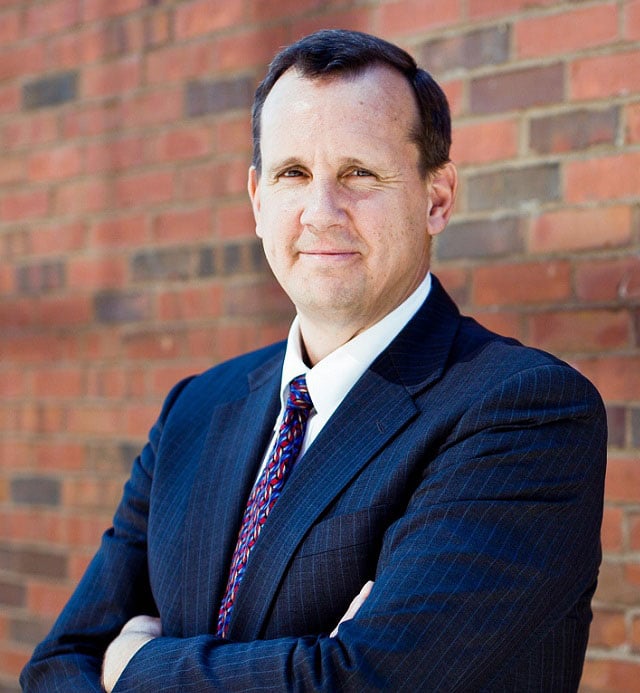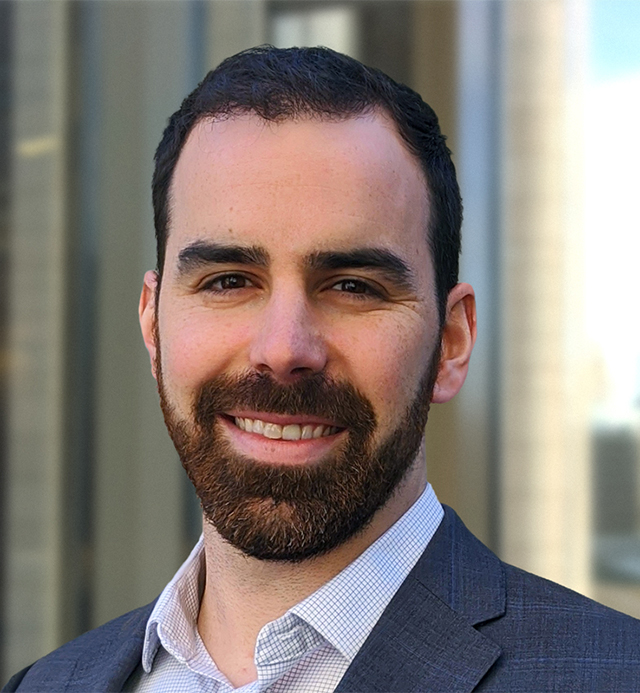-
Listening to the Voice of the Consumer: A Q&A with Peter Golder
In recognition of the one-year anniversary of the US Supreme Court’s Booking.com decision, Analysis Group affiliate Peter Golder of the Tuck School of Business at Dartmouth College spoke with Vice President Mike Schreck about the amicus brief he coauthored with other leading marketing academics in the case, how to use archival material to compile evidence of consumer perception in the marketplace, and how this archival evidence can provide insights on a variety of commercial litigation matters. The case was the first one in Supreme Court history in which oral arguments were heard remotely, by telephone.
What was the issue being decided in Booking.com v. US Patent and Trademark Office?
The US Patent and Trademark Office (USPTO) had rejected the travel website Booking.com’s application to register its domain name as a trademark. The USPTO’s position was that “booking” was a generic term and adding “.com” to it necessarily resulted in another generic term, meaning that the combination was ineligible for trademark protection. It’s important to note that the USPTO was advocating for a per se rule – in other words, a rule preventing all “generic.com” constructions from being trademarked, regardless of any evidence indicating distinctiveness in the marketplace.
Trial and appellate courts rejected the USPTO’s position, but the Supreme Court agreed to hear the case. Ultimately, the Supreme Court upheld the lower courts’ decisions and concurred in rejecting the USPTO’s per se rule. It held instead that whether a “generic.com” term qualified for trademark protection turned on the question of whether consumers perceived the term to be the name of a class of goods or, alternatively, a particular member of that class capable of distinguishing itself from other class members. This approach, the court noted, was in keeping with what it called “a bedrock principle” of the Lanham Act, which provides federal statutory protection for trademarks based on consumer perception.
You and 11 other marketing professors filed an amicus brief in the case. Can you describe the point you wanted to make to the court?
We wanted to stress the relevance and large-scale availability of empirical evidence to address questions of consumer perception and usage. This is something marketing academics such as myself routinely analyze in our scholarly work. The USPTO’s per se rule would have foreclosed any such empirical inquiry. Our concerns went far beyond the particular mark at issue in this case. We wanted to make the court aware that if it upheld the per se rule, it would set a precedent of ignoring a robust body of consumer perception evidence that could be of significant evidentiary value whenever trademark protection was sought for a “generic.com” mark.
We also wanted to inform the court that marketing academics have developed peer-reviewed methods for analyzing such evidence, and that these methods have been used by expert witnesses and accepted by federal and other courts.
Did the court comment on the value of such evidence?
The Supreme Court’s opinion, authored by the late Justice Ginsburg in her final majority opinion for the court, highlighted the role of consumer perception and usage in assessing genericness. The opinion discusses a wide variety of evidence that can inform the inquiry over whether a term is generic, such as usage by consumers and competitors, consumer surveys, and any other relevant sources of information on consumer perception. Our brief pointed to the abundance of such evidence, which we in the marketing discipline refer to broadly as the “voice of the consumer.”
Can you expand a bit on that term? What constitutes the voice of the consumer?
You can find direct evidence of the voice of the consumer in a variety of sources, such as online customer reviews, social media, and search engine query data. Traditional media such as magazines and newspapers can also reflect the voice of the consumer. And the footprint of this evidence is large and continuously expanding, as we pointed out in our brief. For example, social media as we know it today didn’t even exist 25 years ago; now it provides voluminous data on the voice of the consumer. In another 25 years, surely the voice of the consumer will be found in other channels that do not exist today.
So I was very pleased to see the court highlight the probative value of “any other source of evidence bearing on how consumers perceive a term’s meaning.” That reflects a flexible approach that fully considers the facts of a case in light of all relevant sources of evidence on consumer perception, which also evolve over time.
“The beauty of the historical research method is that it can serve as a time machine of sorts. … Archival sources provide empirical evidence that is contemporaneous with the period of interest. That’s important because consumer usage and perceptions can change over time, as do a host of marketplace characteristics.”– Peter N. Golder
The reference to time brings up an important point for litigation. Courts often seek an understanding of the state of events at the time of the disputed conduct – in other words, a historical perspective rather than a contemporary perspective. Historical analysis of archival evidence is one of your academic specialties. How have you applied this specialty in your expert witness work?
The beauty of the historical research method is that it can serve as a time machine of sorts. That time machine has provided many insights in my academic career, and it has proven helpful to courts as well. For example, trademark disputes often center on the state of consumer perception at the first moment of alleged infringement. In another context, courts adjudicating transfer pricing disputes want to know the value of the transferred asset at the time of transfer, without incorporating hindsight knowledge. Archival sources provide empirical evidence that is contemporaneous with the period of interest. That’s important because consumer usage and perceptions can change over time, as do a host of marketplace characteristics.
In my expert witness work, I often analyze archival evidence using peer-reviewed methods and frameworks developed by myself and colleagues in the marketing discipline. It has been gratifying to see the court system understand and accept the importance of such evidence and methods.
Can you give an example of these methodologies in practice?
I served as an expert witness in a high-profile transfer pricing dispute between the IRS and Amazon. The dispute turned on how to value the Amazon brand at the time of the asset transfer, which was in the mid-2000s. The trial took place nearly a decade after the transfer, and it was critical that post-transfer hindsight not influence the valuation. So I analyzed archival evidence contemporaneous with the mid-2000s to provide an estimate of the useful economic life of Amazon’s brand at that time. Importantly, we used the archival evidence to construct a hazard model to provide an econometric estimate of useful economic life. In its opinion, the US Tax Court noted the data-driven nature of my analysis and described my findings as “most persuasive,” and the Ninth Circuit upheld the Tax Court’s decision. I’ve also analyzed archival evidence in a variety of intellectual property disputes, including issues of trademark genericness and secondary meaning.
You mentioned the Amazon case, which has been recognized as one of the largest transfer pricing disputes of all time. You also testified at trial in the Converse Chuck Taylor All Star case, which Law360 named the top trademark dispute of 2016. And, of course, you submitted an amicus brief in the Booking.com case. Did you ever imagine that your academic methods could have such broad application in the legal realm?
Well, certainly not when I was a Ph.D. student working in the depths of the library, reviewing microfilm and microfiche for evidence on market pioneers and historical market leaders. The fact that so much of this evidence is now accessible in digital form, and that so much digitally created evidence is also now available, has really facilitated the application of archival evidence to a wide variety of questions. Once you present that evidence to academic, business, and legal audiences, people really take to it. There’s just something about lessons from history that people value. For example, in the 1960s, Financial World magazine wrote about a company as the “world’s biggest chain of highway restaurants,” the “most fabulous success story,” and the “most strongly entrenched factor” in the industry. What company do you think they were referring to?
When I ask that question in my teaching, the most common answer I get is McDonald’s. But the answer is actually Howard Johnson’s. When people realize how wrong they were, they start to see the value of using the time machine to uncover the buried truth. And given the speed at which consumer perceptions can change, that’s a tool that can be applied to the present, the recent past, and even the distant past. ■
This feature was published in June 2021.



